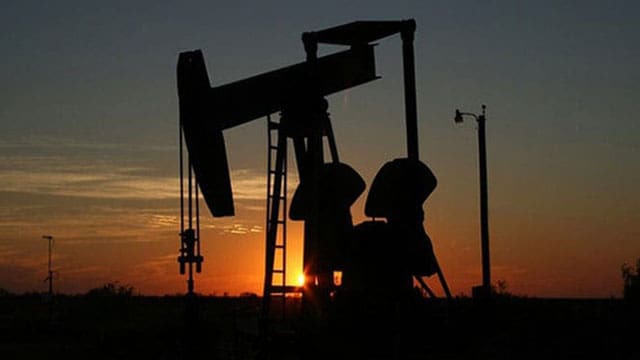By Jean Michaud
and Germain Belzile
Montreal Economic Institute
New Alberta Premier Jason Kenney has vowed to repeal the provincial carbon levy implemented by the previous NDP government.
That tax began in 2017 at $20 a tonne and rose to $30 a tonne before the NDP froze it in protest to delays over the Trans Mountain pipeline expansion.
The federal Liberal government has said that if Kenney makes good on his promise, the federal ‘backstop’ carbon tax will kick in on Alberta consumers, with the federal rate scheduled to rise to $30 a tonne next year.
But a $30-per-tonne carbon tax rate in Alberta, whether imposed provincially or federally, is around 50 per cent higher than the rate in place in Quebec as a result of its cap-and-trade system with California.
There’s no justification for such a gap.
One province shouldn’t pay an effective rate that’s higher than another. Even worse, in those provinces where the federal carbon tax is imposed – Saskatchewan, Manitoba, Ontario, New Brunswick and likely soon Alberta – the tax will be twice as high, if it reaches $50 tonne in 2022 as scheduled, than the de facto rate in Quebec, which is expected to reach around $25.
This is because Quebec’s plan is based on cap and trade, where costs are linked to the price of permits sold on a market it shares with California. The California government deliberately oversupplies permits to keep prices low. Projections for prices on that market show permit prices to remain below $25 by 2022.
Still, the federal government approved Quebec’s cheaper plan as sufficient to avoid the more expensive federal carbon tax.
So certain producers are punished more than others.
The Canadian oil and gas sector is already dealing with several challenges. A higher carbon tax just adds insult to injury.
First and foremost, the lack of pipelines in Canada keeps our resources from reaching foreign markets, forcing exporters to take discounts for serving just one market – the U.S. – using limited transportation options.
A crisis point was reached last year when the discount rate between Western Canada Select and West Texas Intermediate – essentially, the gap between the price of Canadian and U.S. oil – peaked at $50 per barrel, far above its historic level. This led the Alberta government to impose production cutbacks of 325,000 barrels per day, temporarily easing the pain but not solving the underlying problem.
Pipelines that provide access to tidewater would allow Canadian producers to serve Asia, which is the market of tomorrow. While the International Energy Agency (IEA) expects North American and European demand for petroleum products to decrease between 2017 and 2040, Asia’s demand is expected to increase by nine million barrels per day. The IEA also forecasts major increases in natural gas demand by the same countries during that period.
A lack of sufficient pipelines transporting oil across Canada also increases the cost of crude oil for Eastern Canadian refineries. In 2017, Canada imported approximately 670,000 barrels of crude oil a day, with approximately 350,000 barrels a day coming from the U.S. The rest came from such countries as Saudi Arabia, Algeria, Norway, Nigeria, Angola, Azerbaijan, Kazakhstan and the United Kingdom.
The lack of market access, due to the difficulty building pipelines, and the numerous delays surrounding energy projects are the challenges with the biggest financial impact on this sector. This hurts not only provincial public finances but also the Canadian economy as a whole – at a cost of some $4 billion annually in recent years. That cost has certainly grown far higher now that oil production exceeds pipeline capacity.
To this must be added new regulations that make the process of developing projects more burdensome. In Alberta, for example, permitting delays are much longer than in the United States, our main competitor.
The federal government also plans to impose the Clean Fuel Standard, which will add yet another layer of regulation. In fact, it’s simply another carbon tax under a different name.
The cumulative effect of these measures, often adopted piecemeal, will stifle the Canadian oil industry, which has already been hit hard. Investment in Alberta’s oil and gas sector has fallen by half, from $81 billion in 2014 to $40 billion in 2018. The oil sands sector, requiring longer lead times, has experienced an even sharper drop in investment, from $34 billion to $11 billion over the same period.
Experts project that the global demand for oil will continue to grow until at least 2040, especially in Asia. That’s why Canada must continue to supply some of that demand in a responsible manner, as it already does, rather than leave its resources in the ground in favour of other producing countries – some of which have environmental and human rights records that are far less exemplary than Canada’s.
Instead of overtaxing and overregulating the vital part of our economy that is Alberta’s oil and gas sector, we should strive to eliminate unnecessary hurdles and misguided policies that reduce the well-being of Canadians while providing little to no benefit for the natural environment.
Jean Michaud is an associate researcher at the Montreal Economic Institute and Germain Belzile is a senior associate researcher at MEI.
The views, opinions and positions expressed by columnists and contributors are the author’s alone. They do not inherently or expressly reflect the views, opinions and/or positions of our publication.



